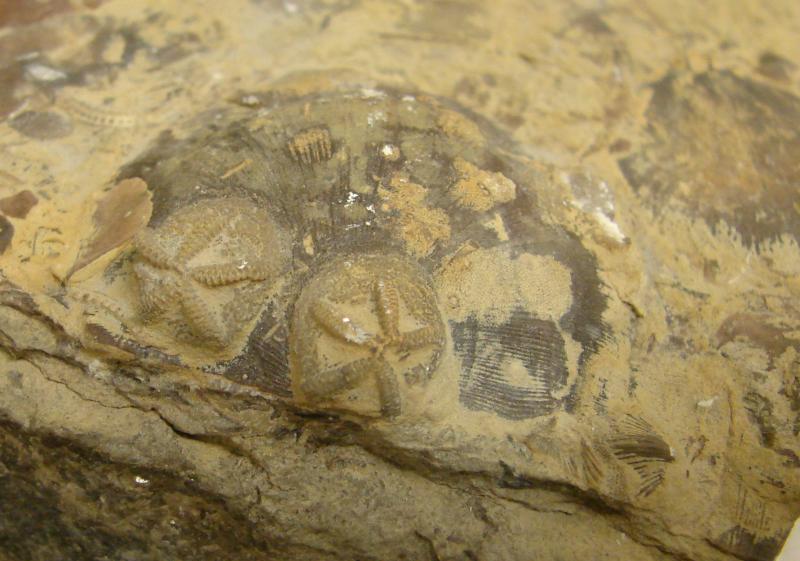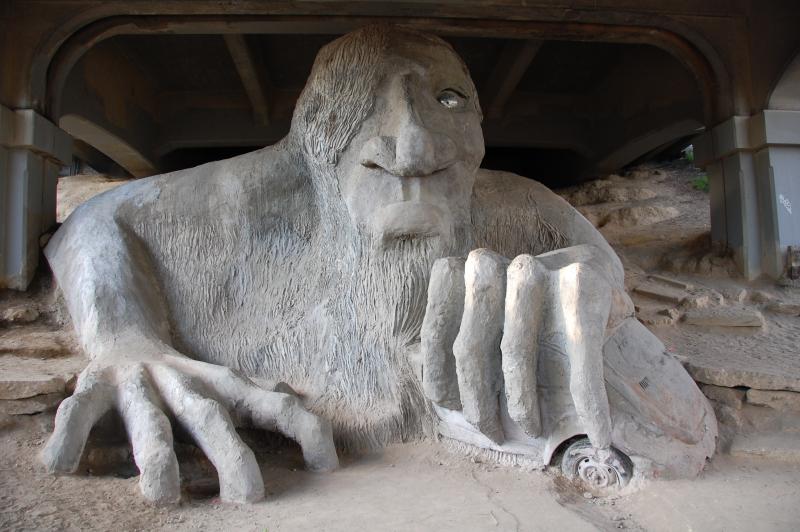This past week on Fossil Friday, I gave you a stack of fossils all the way from Danville, Kentucky! What were they?

It was a couple of Cystaster stellatus on a Rafinesquina alternata brachiopod dating from the Upper Ordovician. The C. stellatus are an extinct class of echinoderms known as Edrioasteroidea.
From Dan Phelps, the photographer and president of the Kentucky Paleontological Society:
"Edrioasteroids are usually scarce fossils, but when you find one there are usually more on the same bed. Apparently, when they reproduced all of the eggs landed in a limited area."
He reported finding them in the 1990s in the Caldwell Stone Company Quarry, where he collected dozens of specimens that were donated to the Cincinnati Museum Center. After the discovery, more research was done and a student even got a master's thesis out of it—way cool!
Dan also offered up some photographs of other 5-"armed" specimens and some 6-"armed" ones as well:
"The 'arms' are actually groves leading to a central mouth; they were not flexible like a sea star's arms, although edrioasteroids did have tube feet. Specimens with six 'arms' may be a mutation or a developmental problem caused by damage in an early stage of development."
And the winner this week? Gerald Wilgus! Congrats, Gerald, and thanks for playing. Special thanks for Dan for supplying the photographs this week. If you have a fossil you want to share, send them to me at berbeco@ncse.com. And don't forget to follow all the fossil fun on Twitter @NCSE and @MindaBerbeco!
Special note to our NCSE fans:
Though we love your support in defending and fighting for good science and adore our vocal and strong support network of science-lovers, we have a policy here at NCSE and also on our blog not to feed the trolls. So be kind, rewind, and be sure your comments stay grandma-appropriate—my mom reads this blog!

Photo Credit: Roshan Vyas via Compfight cc

